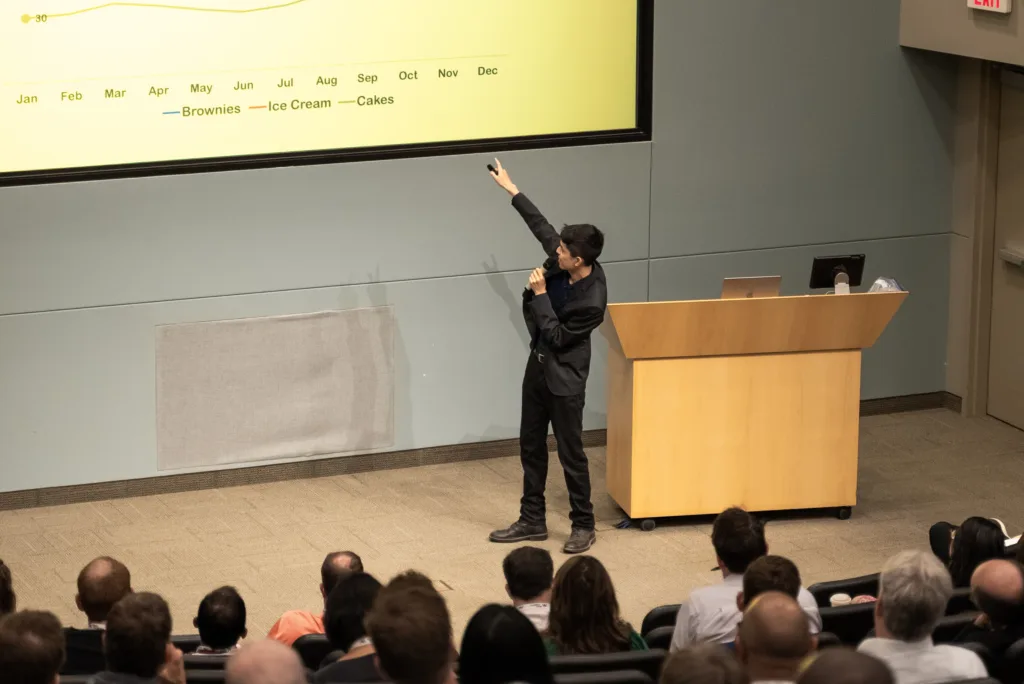As presenters, we always wonder, “How can we better engage our audience?” If we devote 45 minutes for a talk, how much goes one ear out the other, or way over everyone’s head? In higher education, this is essentially a question of active vs passive learning.
The standard college lecture is an example of passive learning – “teaching by telling” that is heavily focused on the instructor. Workshops, studios, and group problem solves, on the other hand, are examples of active learning where the students have a strong participatory and constructivist role. A 2014 study by the US Proceedings of the National Academy of Sciences (PNAS) found that active learning boosted student grades by half a letter. And not only that:
“Students in classes with traditional lecturing were 1.5 times more likely to fail than were students in classes with active learning”
PNAS 2014 Study
In other words, instead of just (passively) telling the audience something, if you let them (actively) participate in reaching that same conclusion, they will come away with much better engagement and understanding of the material.
Below are 3 strategies for encouraging audience participation during your presentations:
- Ask a Question
- Show of Hands
- Fill in the Blank
In this post, we’ll break down how Daniel Pink made expert use of these 3 strategies during his second keynote of the 2013 REACH conference.
1. Ask a Question
Daniel Pink’s keynote was about purpose, his title slide claiming it to be “The world’s cheapest (and perhaps most effective) performance-enhancing drug”. The presentation was structured around three supporting research studies and Pink cleverly maintained engagement by integrating each section with a moment of audience interactivity.
The first section was about a daycare center where parents always came late to pick up their kids. To motivate more punctual pick-ups, the daycare center started to impose a late fee. But that actually turned out to have the opposite effect – parents started to come even later! Pink took this opportunity to initiate the first example of audience participation: asking a question. Watch the clip below as he asks the audience why they think the penalty approach failed. (Note that at 0:11 there is a small skip possibly due to a temporary sound failure):
Presentation Clip 1
The reason why this interactivity was so successful was Pink came well prepared with meaningful questions. For each of the questions he asked below, notice how none of them have an obvious or simple yes/no answer. They each required the audience to dig into the material and try and work through the problem themselves:
- “I’ll actually go to you, tell me what happened?” (Requires the audience to figure out why the late fee had such an unexpected response)
- “In the initial instance, most people were showing up on time. Why?” (No obvious answer because originally there was no clear motivation)
- “What were the consequences?” (No obvious answer because originally there was no penalty)
The results were very rewarding. As Pink asked follow-up questions and worked with the audience to get to his final conclusion, you could see the light bulbs going off as more and more people chimed in. Because instead of just being told the answer (as in a lecture or typical speech), the audience was able to discover it largely on their own and feel emboldened as many of their peers did the same.
2. Show of Hands
The second section of the presentation revolved around encouraging healthcare workers to wash their hands by testing out three different signs:
- Hand hygiene prevents you from catching diseases
- Hand hygiene prevents patients from catching diseases
- Gel in, wash out
In the clip below, Pink uses the second technique of audience participation – show of hands – to gauge the audience’s opinion on which sign was the most effective:
Presentation Clip 2
Once again, the reason for this interactivity’s success was its non-obvious answer. Pink was counting on most of the audience favoring the wrong sign (i.e. not #2). This is because our culture places a high value on good, catchy marketing (#3) and independence/self-preservation (#1). By going through this exercise of debunking signs #1 and #3 through a show of hands (instead of just saying the answer was #2), Pink made the audience visibly confront their preconceptions about purpose and actively change them.
3. Fill in the Blank
The third and last section of the keynote was about motivation for workers in a call center and the difference between “Purpose” and “purpose”. Pink explains how the grander “Purpose” needs to be balanced by the smaller, everyday “purpose” to maximize worker performance and happiness. Through interviews he conducted with people dissatisfied with their jobs in large organizations, he kept seeing the same line pop up in all the transcripts. He asks the audience to “Fill in the Blank” for that line in the clip below:
Presentation Clip 3
It’s important to note that this kind of interaction should not be used at the beginning of a presentation, before the audience is properly warmed up to you and the dynamic you are generating with them. (Otherwise they might not respond at all!) Pink is able to get a huge portion of the audience to audibly fill in the blank here because, by this point, they were familiar with his style and reciprocating his energy.
But above all the audience responded so forthrightly because they were encouraged by the fact that every previous instance of interaction had been rewarding and meaningful. In this case, Pink once again does not ask a question with an obvious answer. He knows the audience will fill in the blank with the word “difference”, because it is so idiomatic in our language. Once they do, he expertly replaces it with the word “contribution” to emphasize his point about “purpose” – that the smaller, everyday role people play is vitally important to letting them feel empowered in their organizations.
Summary
When creating your own presentation, use these 3 strategies to achieve Pink’s masterful use of audience participation:



